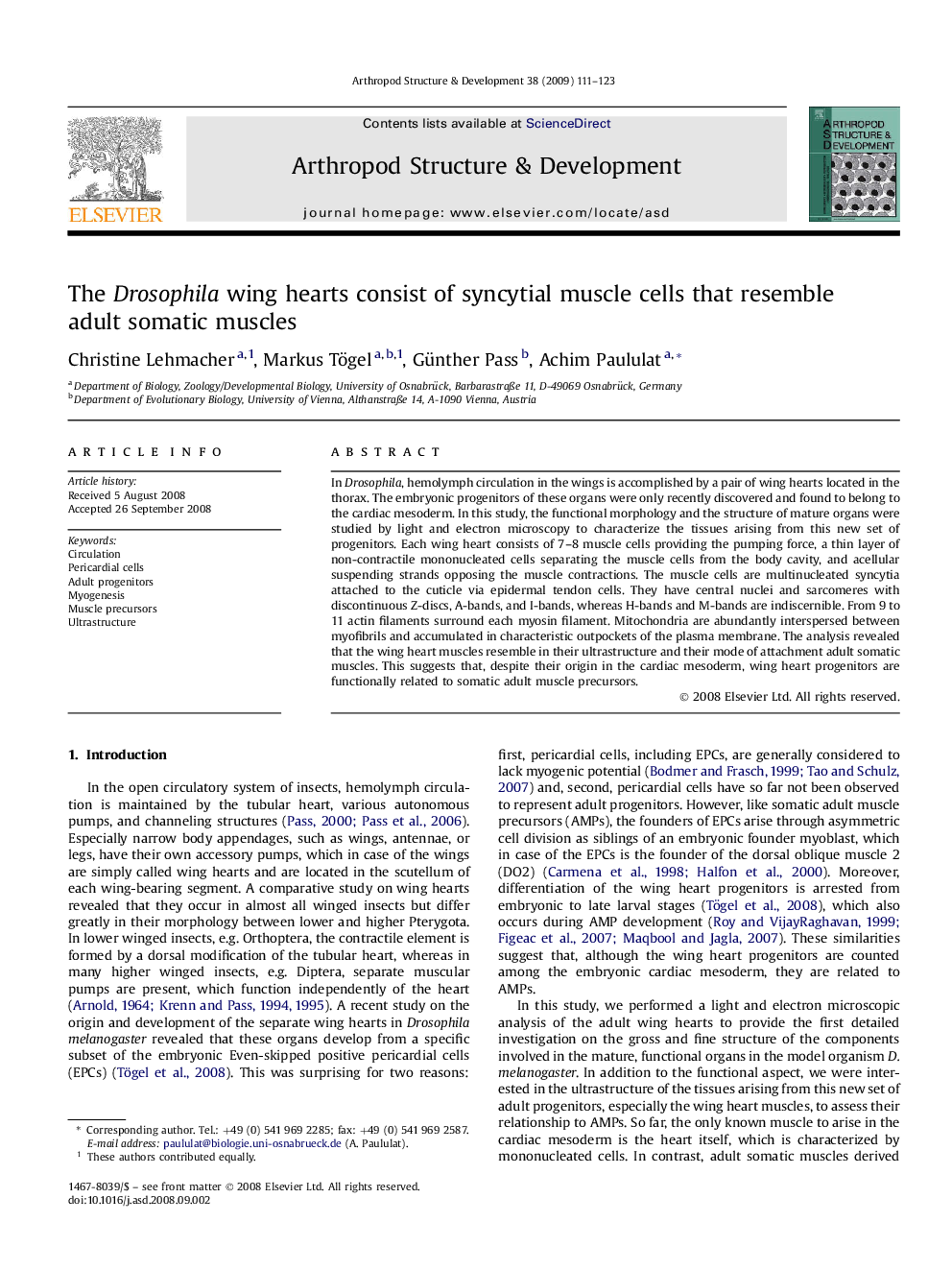| Article ID | Journal | Published Year | Pages | File Type |
|---|---|---|---|---|
| 2778956 | Arthropod Structure & Development | 2009 | 13 Pages |
In Drosophila, hemolymph circulation in the wings is accomplished by a pair of wing hearts located in the thorax. The embryonic progenitors of these organs were only recently discovered and found to belong to the cardiac mesoderm. In this study, the functional morphology and the structure of mature organs were studied by light and electron microscopy to characterize the tissues arising from this new set of progenitors. Each wing heart consists of 7–8 muscle cells providing the pumping force, a thin layer of non-contractile mononucleated cells separating the muscle cells from the body cavity, and acellular suspending strands opposing the muscle contractions. The muscle cells are multinucleated syncytia attached to the cuticle via epidermal tendon cells. They have central nuclei and sarcomeres with discontinuous Z-discs, A-bands, and I-bands, whereas H-bands and M-bands are indiscernible. From 9 to 11 actin filaments surround each myosin filament. Mitochondria are abundantly interspersed between myofibrils and accumulated in characteristic outpockets of the plasma membrane. The analysis revealed that the wing heart muscles resemble in their ultrastructure and their mode of attachment adult somatic muscles. This suggests that, despite their origin in the cardiac mesoderm, wing heart progenitors are functionally related to somatic adult muscle precursors.
